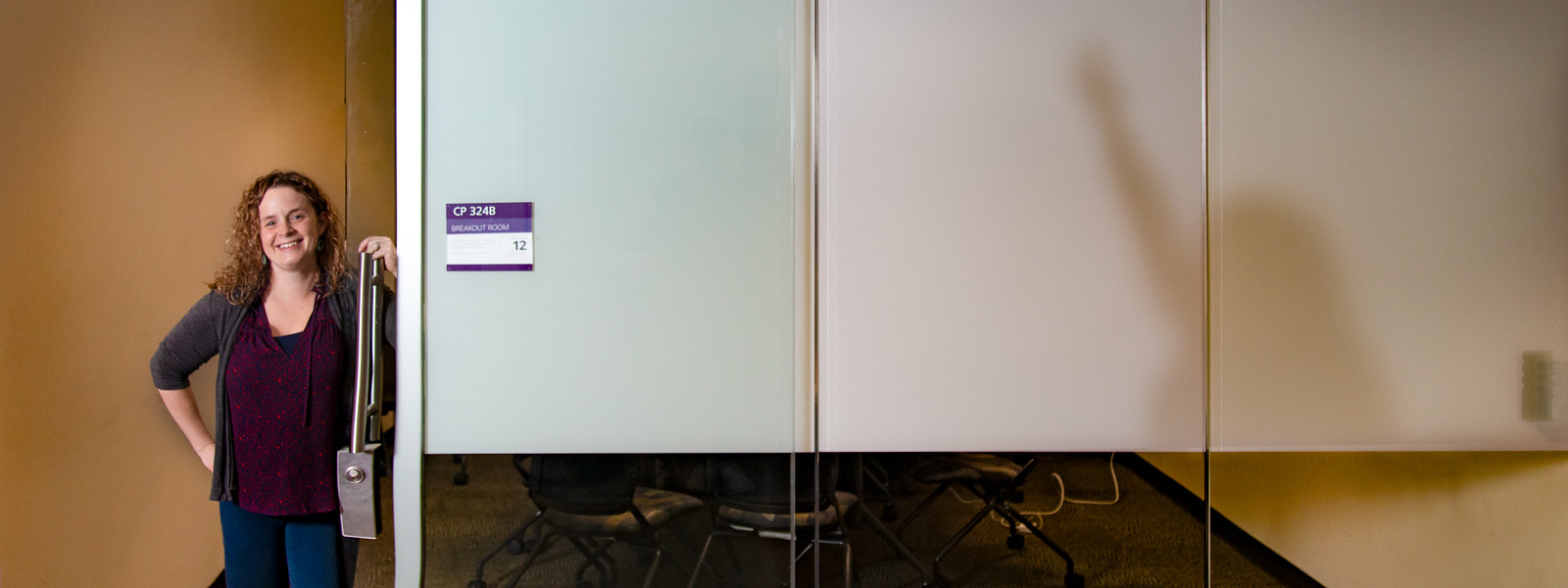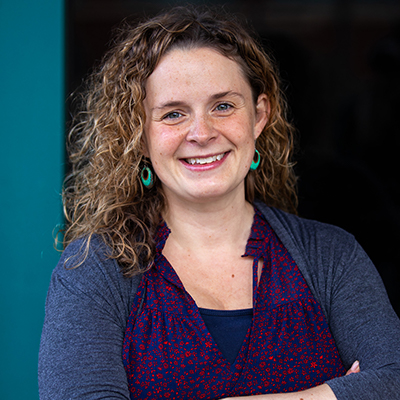
Making the Invisible Visible
Assistant Professor Amanda Sesko examines the psychological principle of invisibility and how it affects marginalized groups.
A group of professionals sit around a table discussing some aspect of business. The conversation goes back and forth with little to no progress being made. A woman at the table gets an idea. She tries to interject but can’t get a word in edgewise. Frustrated, the woman stands. No one notices. The woman is talking loudly now in a desperate attempt to break through the din. Her words are heard but her voice isn’t. Everyone else in the room thinks someone else said it. This woman is alive. She has a pulse and a mortgage, a family and an opinion, yet here, in this room, she doesn’t seem to exist.
The paragraph above could be the plot of a science fiction movie or book. It’s easy to picture a weary protagonist doing battle with some supernatural force that has the power to make a person disappear in specific situations. This particular horror story is real and while it may be exaggerated, it does describe the psychological principle of invisibility.

UW Tacoma Assistant Professor Amanda Sesko studies this phenomenon. Born in Connecticut, Sesko moved to Wisconsin at age 13. “I have always been into academics,” she said. “I was that kid studying all the time.” Sesko earned a bachelor’s degree in psychology with a minor in women’s studies from the University of Wisconsin-Madison.
While at the other UW, Sesko joined Dr. Patricia Devine’s prejudice and intergroup relations lab as a research assistant. “She’s really well-known in the field of prejudice and stereotyping,” said Sesko. “I was just totally blown away by the stuff she did.” Sesko wrote and received a grant as an undergraduate to research how norms influence prejudice. “She [Devine] was a great mentor and I think that had a huge impact on where I ended up,” said Sesko.
Sesko went onto to complete both a master’s and a Ph.D. in psychology at the University of Kansas. During this time she began looking at the research on stereotyping and prejudice. “There really wasn’t much in there about black women or other groups with multiple stigmatized identities,” she said. “If you were talking about sexism, the focus really was on white women. The research on racism tended to focus on black men.”
The idea of invisibility isn’t new. Ralph Ellison’s seminal novel Invisible Man opens with this quote: “I am invisible, understand, simply because people refuse to see me.” Sesko says black women, specifically feminist scholars, have been talking about the issue for years. “If you think about it, black women’s contributions to the civil rights movement have been written out of history,” she said. “The same is true of the women’s rights movements where they [black women] were actively excluded by their white female counterparts.”
Sesko’s early research centered on black women and invisibility. In one study she and her co-author — Dr. Monica Biernat from the University of Kansas — had participants view a series of photos of black women, black men, white women and white men. People were then given a short break before returning and looking at the same photos with a few new ones added into the mix. “Their main task was to say whether or not they’d seen the photo before,” said Sesko. “We found that black women were misremembered over and above all other groups.”
A second study had participants listen to different conversations by black women, black men, white women and white men. Like the first study, individuals in this experiment heard the same statements again plus some new ones. “We then asked them if they heard specific statements within these conversations and, if so, they then had to identify who said it,” said Sesko. “We found that compared to the other groups, black women’s statements were more likely to be misremembered as being said by others.”
Sesko’s work has since shifted into looking at what leads to invisibility, the downstream consequences of invisibility, and experiences of invisibility in contexts such as the workplace and school. After completing her Ph.D., Sesko accepted a faculty position at the University of Alaska Southeast. “I became really interested in how different representations of people influence perceptions of what we think they do,” she said.
This curiosity lead Sesko to explore perceptions and stereotypes of Native Americans. For one study, Sesko had participants look at a photo of trees and water. They were then asked to write about what they saw. “We prompted them to think about the past or present and describe what they thought was going on there,” said Sesko. Afterwards, Sesko asked participants to rate Native Americans on a series of behavioral attributes. “Just thinking about the past, compared to the present, lead them to think Native Americans were less likely to engage in intelligence-related behaviors like going to school or reading the paper or were less likely to use modern technology,” she said.
Understanding how stereotypes form and how they endure is something Sesko is exploring. “Social representations influence how we see people and where we think they belong,” she said. “Not seeing people has big consequences, but feeling like you’re not seen also carries big consequences.”
Returning to the opening paragraph and the group of business professionals: the woman in this scenario is invisible and that can be detrimental in a variety of ways. “If you know you’re not remembered or you look around and don’t see people like you in these positions then you know you’ll have to work harder to get places,” said Sesko. “That has a lot of implications for how you navigate the world.”
Sesko came to UW Tacoma in the fall of 2018. She quickly established the Social Judgment Lab on campus. Sesko currently has a group of seven research assistants — all undergrads — who help her continue researching invisibility. “It’s not enough to just study invisibility, we have to make sure we’re studying groups that are underrepresented so they become more visible and their voices are heard,” she said.
This philosophy extends to the classroom. “I had great mentors and I hope to be that for my students,” said Sesko. “Part of being a mentor means recognizing every student has the potential to learn and grow and that I need to provide space for that to happen.”
A group of students sit at their desks. The conversation goes back and forth. A student, one who doesn’t say much, gets an idea. She tries to interject but gets lost in the noise. Sesko sees this and makes sure the student gets a chance to be heard.



